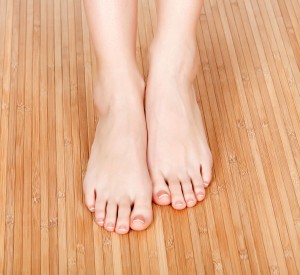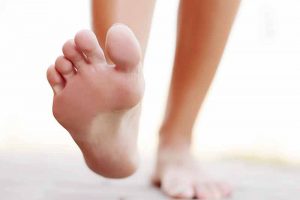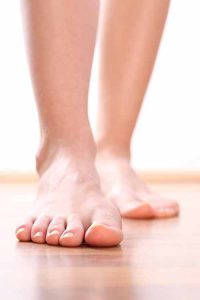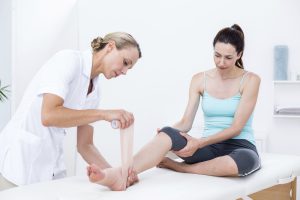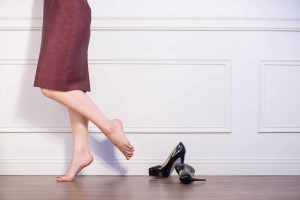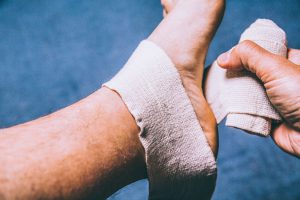Medically Reviewed by Dr. Rachel N. Verville
April 3, 2017
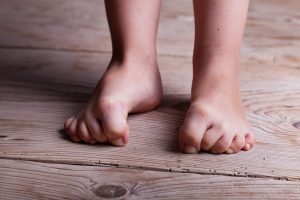 Close your eyes and picture a toddler walking—how are their feet positioned? If you’re like most people, you probably visualized their tiny feet pointed slightly inward. In-toeing, or being “pigeon-toed,” is extremely common in small children. Usually, over time, the feet straighten themselves out, and parents have nothing to worry about.
Close your eyes and picture a toddler walking—how are their feet positioned? If you’re like most people, you probably visualized their tiny feet pointed slightly inward. In-toeing, or being “pigeon-toed,” is extremely common in small children. Usually, over time, the feet straighten themselves out, and parents have nothing to worry about.
But what happens if the in-toeing doesn’t correct itself? It may be time for Frisco parents to contact a foot doctor.
Causes of In-toeing
If your child is in-toeing, it is likely being caused by one of three different primary causes.
- Curved foot (metatarsus adductus): The outside of your foot is straight, right? With metatarsus adductus, that outside curves inward from the middle of the foot to the toes. A baby’s foot is usually very flexible and will fix this deformity on its own.
- Twisted shin (tibia torsion): Sometimes in-toeing isn’t caused by the foot and can be the result of a twisted shin If a foot doctor finds a tibial torsion is causing your child’s in-toeing, this means the bone of the lower leg is turned inward between the knee and ankle. Again, this often corrects itself.
- Twisted thighbone (femoral anteversion): With femoral anteversion, the thighbone is twisted between the hip and the knee. This is normal in children and will almost always correct itself before a child is ten years old.
When In-toeing May Not Be Normal
Most parents in Frisco are relieved to learn from Dr. Verville that in-toeing is quite common for kids, but there are situations that may warrant visiting a podiatrist for treatment. Contact Dr. Verville immediately if you notice:
- Your child only has in-toeing in one foot
- Your child’s in-toeing is very severe and isn’t getting any better as he or she ages
- Your school-age child’s in-toeing is causing them to trip, and it’s affecting participation in physical activities
- Your child’s feet are stiff, and the in-toeing is not improving
- In-toeing is causing your child a lot of pain
The course of treatment your foot doctor in Frisco recommends will depend on several different factors and isn’t a one-size-fits-all situation. Some children may benefit from special shoes or braces, while others with more serious conditions may ultimately need surgery at some point.
If your young child or baby is exhibiting signs of in-toeing, you may want to make an appointment with a foot doctor like Dr. Verville to ease your mind and stay on top of the condition. Your foot doctor will be able to determine the cause of the in-toeing and recommend any types of early intervention that could help. In addition to monitoring the in-toeing—which will likely correct itself over time—it’s just a good idea to schedule regular visits with a podiatrist as your child grows to keep their feet and ankles healthy.
Concerned About Your Child’s In-toeing?
Don’t sit at home and worry about your son or daughter’s in-toeing—there’s a podiatrist in Frisco who’s ready to help. Contact Dr. Verville at RNV Podiatry to schedule an appointment by calling (214) 385-8822.




